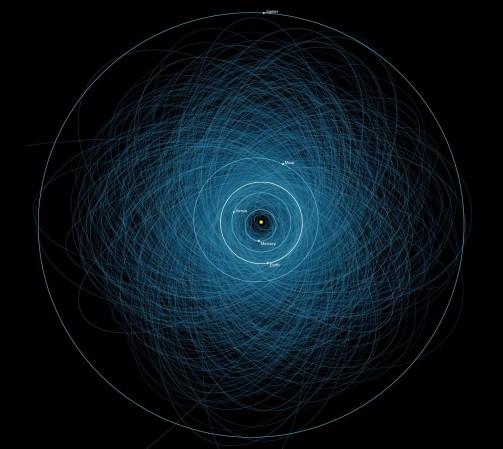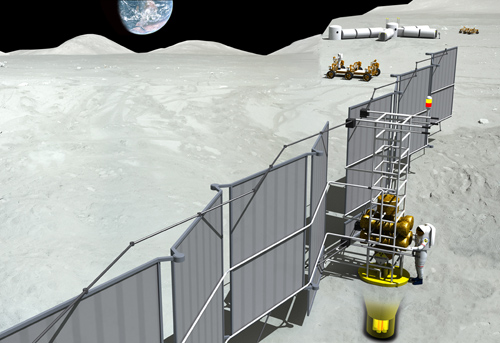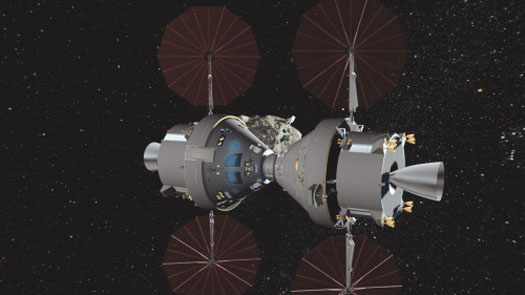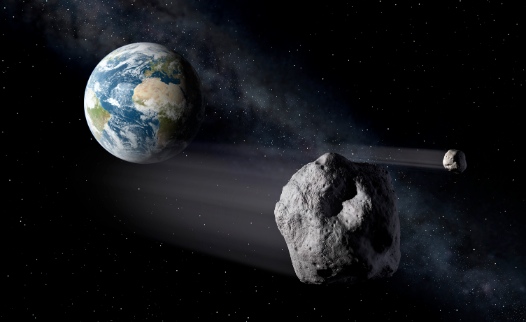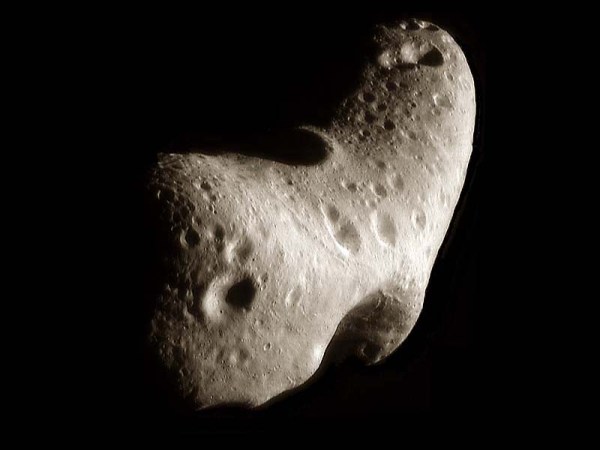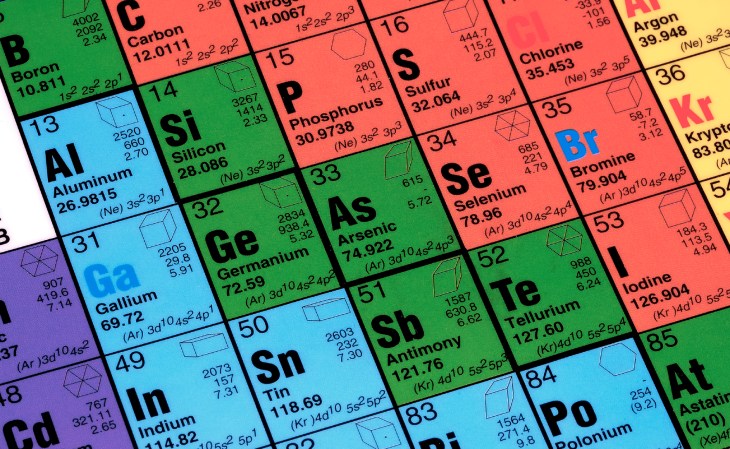

Partly to help explain solar eclipses, the ancient Egyptians had a story about the serpent god Apep, the Uncreator, who tried to swallow the sun god Ra as he crossed the sky.
Apep — the Greeks called him Apophis — personified death, destruction and chaos. His opponent was the goddess Ma’at, who represented all that was light and truth.
Now, a group of NASA scientists is hoping Ma’at will once again help humans ward off the harbinger of destruction.
The MAAT satellite — Measurement and Analysis of Apophis Trajectory, a conveniently descriptive acronym — is still just an idea. But if it’s built, the modestly priced probe could help illuminate one of the solar system’s most famous and most misunderstood asteroids.
A few months after its discovery in June 2004, asteroid 99942 Apophis was briefly thought to pose a serious threat to Earth in either 2029 or 2036. But further calculations showed it is unlikely to hit the planet, unless it passes through a gravitational “keyhole” that might send it swinging Earthward seven years after its initial visit.
This would be bad, explained David Morrison, director of the Lunar Science Institute at NASA’s Ames Research Center at Moffett Field, Calif.
Apophis is about 1,000 feet across and roughly the size of a 25-story building. The 1908 Tunguska meteoroid, which caused a massive fireball and flattened a forest in Siberia, was about 10 times smaller and about 1,000 times weaker in terms of energy. “Where Tunguska would have destroyed a city, something like Apophis is rather worse. It would ruin your whole day,” Morrison said. “That’s big enough to destroy a state in the U.S., or a small country. It’s not something that you would want to sit back and (ignore).”
Thankfully, Apophis is not likely to hit Earth, but it’s worth studying because it comes so close and there are many other asteroids like it, Morrison said.
It does seem like a good starting point for missions to understand these sub-kilometer asteroids,” he said.
As of Saturday, March 21, there were 6,163 known near-Earth asteroids, about 770 of which are a dangerous half-mile in diameter or wider, according to the Near Earth Object Office at NASA’s Jet Propulsion Laboratory. Their paths around the sun occasionally bring them across Earth’s orbit. With enough warning — and so long as we know about the asteroid’s existence, we’d have some warning — humans could send a spacecraft to a threatening rock and kick it away by slightly altering its trajectory.
The MAAT probe would be designed to match Apophis’ orbit and tell us if we need to move it. More cost studies are needed before NASA has a price tag, but Morrison said the mission is intended to be relatively inexpensive, around $100 million. It will piggyback onto a satellite going up to a geosynchronous orbit, about 18,000 to 22,000 miles above Earth, and continue until it hooks up with the asteroid. It won’t land or crash, unlike previous asteroid missions such as Deep Impact, but it will shed some light on the space rock by flying in formation with it.
It would carry several cameras, a radio system and a laser range system to measure the distance between MAAT and Apophis so scientists can determine the asteroid’s mass and trajectory. “If we ever face one that will hit us, the first question they are going to ask is its trajectory. It’s only in Hollywood that asteroids change orbit. Once you determine the orbit carefully, then you can predict where it will be in the future,” Morrison said.
Scientists hope a refined understanding of Apophis’ path around the sun will erase lingering worries about its odds of striking Earth. “It would be nice to have a press conference and tell you for sure it’s not going to happen,” Morrison said.
Scientists’ level of certainty has varied wildly since the asteroid was discovered in June 2004. That December, observations from some amateur astronomers set off alarms at JPL’s Sentry asteroid-watching program. Around Christmas 2004 — when most of the world was reacting to an Earth-based disaster, the Sumatra tsunami — the odds of Apophis hitting Earth in 2029 peaked at 2.7 percent, a frightening statistical possibility.
The number was soon revised down after a flurry of observations; as of now, the chances of Apophis hitting Earth in 2029 are about 1 in 45,000. In 2029, it will pass within about 18,000 miles of Earth, well within the range of geosynchronous satellites, but scientists at JPL say its trajectory won’t endanger the satellites.
That’s where it gets interesting, however. Earth’s gravity will dramatically affect Apophis’ orbit, leaving scientists to estimate where it will end up next.
If Apophis passes at 18,893 miles above Earth, it will pass through a gravitational “keyhole” about half a mile wide, which would nudge it just enough to send it on a course for collision with Earth seven years later, on April 13, 2036. MAAT will provide more data to check these estimates and tell us whether we should do something to move Apophis from that keyhole using a solar sail, some added weight or a space tugboat of sorts. It’s also a way to test a type of asteroid- tracker that might be really important someday.
We don’t know exactly where Apophis is going to go, but it’s very unlikely that it will end up on an impact trajectory,” Morrison said. “But it is a prototype of the type of object that we might have to deal with.”
Scientists at JPL are confident further observation will show Apophis will pass about 49 million miles from Earth on April 13, 2036, which happens to be Easter Sunday.
That date is one of many numerological coincidences that have helped make the asteroid famous: For one thing, Apophis is Near Earth Object 99942 — 999 upside down is 666, the “number of the beast,” a number associated with the end-times prophecy in the New Testament chapter Revelation. It is expected to pass Earth the first time on April 13, 2029 — a Friday the 13th. What’s more, 2 + 0 + 2 + 9 = 13.
Feeling unlucky yet? Maybe the probe named for goodness and light will be able to help illuminate this dark nomad of the sky.
Near-Earth Asteroid Talk
Interested in space rocks? Log on to a chat with NASA’s asteroid hunters Wednesday, March 25, at 7:30 p.m. Eastern. Participants include Don Yeomans, manager of NASA’s Near-Earth Object Office at the Jet Propulsion Laboratory, and two NEO office scientists, Steve Chesley and Paul Chodas. Join the discussion at https://www.ustream.tv/channel/nasajpl/

